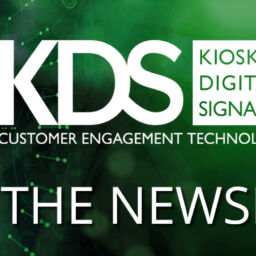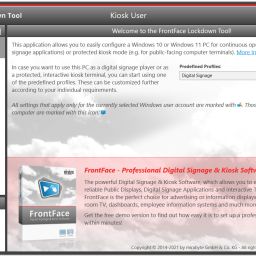
Jonathan Hassell, CEO at Hassell Inclusion
On 28 June 2025, the European Accessibility Act (the EAA) became law across the member states of the EU. This major piece of legislation is designed to make digital accessibility for people with disabilities a priority and will affect businesses that operate within the EU and those that have European customers.
This will have a major impact on multiple sectors that provide services digitally to customers including banking, ecommerce websites and apps, travel operators, and broadcasters and streaming services.
Importantly, the EAA expands the scope of EU accessibility requirements from websites and mobile apps to include ‘physical’ self-service terminals such as payment terminals, ticketing and check-in machines, kiosks and ATMs. The deadline to make websites and apps accessible is 2025, with a transition period for qualifying products that provide services. The act states that, “Given the cost and long life-cycle of self-service terminals, it is appropriate to provide that, when such terminals are used in the provision of services, they may continue to be used until the end of their economic life, as long as they are not replaced during that period, but not for longer than 20 years.”
However, given the challenging task ahead, it will be prudent to use this transition period to prepare.
While the full details of penalties for non-compliance in each EU member state are still to be defined, those already published range from significant fines to imprisonment, with reputational damage thrown in for good measure.
So, how can the manufacturers and suppliers of digital kiosks, point of sale technologies and ATMs get themselves ready for the EAA?
Building on good progress
Customers with accessibility needs that the EAA supports include those with a range of conditions, including sight and hearing impairments, reading or cognitive problems, fine motor difficulties, and more general impairments associated with ageing.
The good news is that accessibility is starting to become a priority for many companies, and as a result, they are requiring that suppliers of their online digital products meet criteria like compliance with the Web Content Accessibility Guidelines (WCAG 2.1 AA).
However, many fewer companies have considered the accessibility of their kiosks. The European EN 301 549 Standard, which includes accessibility guidelines for hardware alongside guidelines for software, is the key guidance here, and the Standard the EAA requires to be upheld.
The EAA means there is now an added impetus for businesses to get their digital accessibility house in order, across all customer touchpoints, including kiosks. As a result, they will be turning to their kiosk suppliers and vendors to help them comply.
The digital accessibility opportunity
There are multiple ‘physical’ digital touchpoints that consumers may need to navigate, from digital check-ins at airports, to ticket machines at rail stations, self-checkouts at retail stores and cashpoints. All these need to be accessible to ensure a smooth user experience.
For manufacturers and suppliers of digital kiosks, the imperative here is clear. If your hardware doesn’t allow your clients to provide accessible experiences, they may not be able to procure it from you.
To allow your customers to provide accessible experiences with your kiosk hardware, there are three important steps to take:
- Design for accessibility
For kiosk suppliers and vendors, accessibility considerations should start right at the beginning of the product development cycle. For example, our analysis has shown that there is often an ad-hoc approach to accessibility in the development of digital products.
Accessibility needs to be embedded throughout the development process of all products. In the case of kiosks, it’s about ensuring the physical design of the kiosk allows customers in wheelchairs, for example, to reach the touchscreen easily. And ensuring that software designed by the client can provide speech output or text resizing. You need to ensure your kiosk platform supports accessibility, and work with your clients to ensure they can get the best from that support. You should also ensure that the accessibility of your kiosk platforms is regularly monitored and checked as new versions are created, and to ensure that physical accessibility, which cannot be so easily fixed after launch, is correct right from the start.
Appoint an accessibility champion
It is important to have a senior leader to champion accessibility. Having a digital accessibility programme manager who can lead a project team to understand the EAA, and plan to deliver its requirements in product development is crucial.
Require accessibility from suppliers and partners
For those procuring kiosk hardware or software to provide services for their customers, it is essential that they don’t walk into procurement or service contracts without accessibility delivery having been discussed. Great kiosk accessibility is only possible if hardware and software work well together to provide an accessible experience. So, if you are expecting your customers to use your kiosks, it’s essential to take your wider supply chain of hardware and software partners on this journey with you, by ensuring digital accessibility is a key part of procurement processes and contracts.
Preparing for the EAA
Whether you are a kiosk supplier or you have a kiosk supplied to you, to create an experience from, for full kiosk accessibility, there will be a considerable amount of information and complexity to get to grips with to deliver to the EAA requirements, which may be implemented in slightly different ways in each member state.
As such, it’s critical that you get a plan in place to ensure your kiosks and ATMs are compliant. We’ve worked with banks and retailers, and their kiosk and ATM suppliers, for many years to assess and optimise the self-service terminal experiences their customers who have disabilities receive. We’re now helping many of these to understand the requirements of the EAA, how to put in place a feasible plan to deliver what they need ahead of the deadlines, and how to ensure they can benefit from the return-on-investment opportunities of accessibility from this work.
To find out how we can support you, please contact us at www.hassellinclusion.com/






